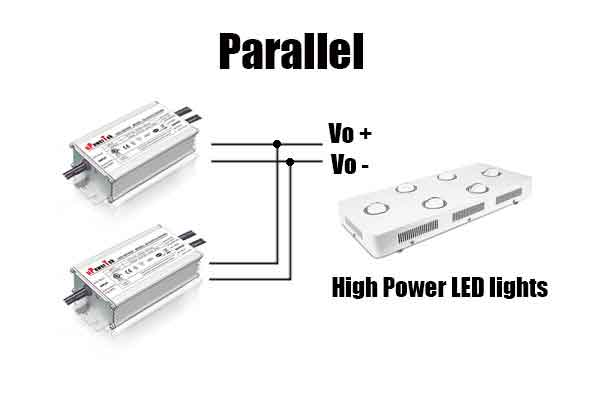Now more and more high power luminaires are utilized for horticultural or industrial lighting applciations to realize better control and reduce installation and maintenance cost. To achieve that, designers have two options, one single high power LED driver and the other is multiple LED drivers in parallel. Yes, it is possible to put LED drivers in parallel. However, although the possibility exists, putting LED drivers in parallel is not the best practice.
Kindly note that putting LED drivers in parallel is only suitable for constant current LED drivers.
What does it mean to put LED drivers in parallel ?
LED drivers in parallel involve joining all electrical nodes like input and dimming, and for output, some designers like to put them together to drive single LED panel, and some like to LED driver different LED modules separately. Then the joining of all negative connections and connecting them to the negative output of the LED driver.
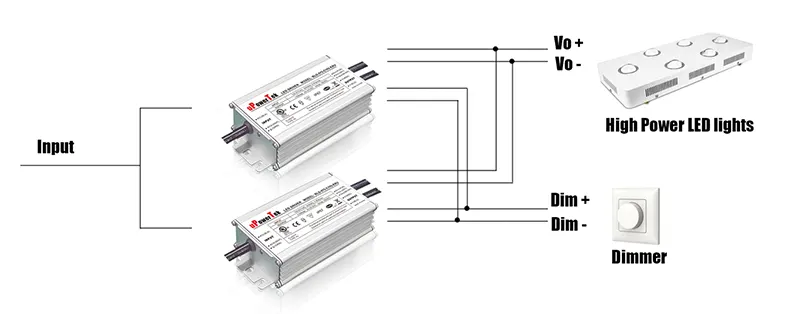
Why are LED Drivers Paralled Sometimes ?
Of course, there is a reason for connecting LED drivers in parallel. But before we dive into it, it is best to have a background view of what happens when LED drivers are parallel.
- The same voltage flows across each LED in the connection
- Current flows through each LED, and the sum of these currents gives the total current of the system.
- Each parallel string shares the total output current
Building on the above basics, the key reason for putting LED drivers in parallel is to get a higher power.
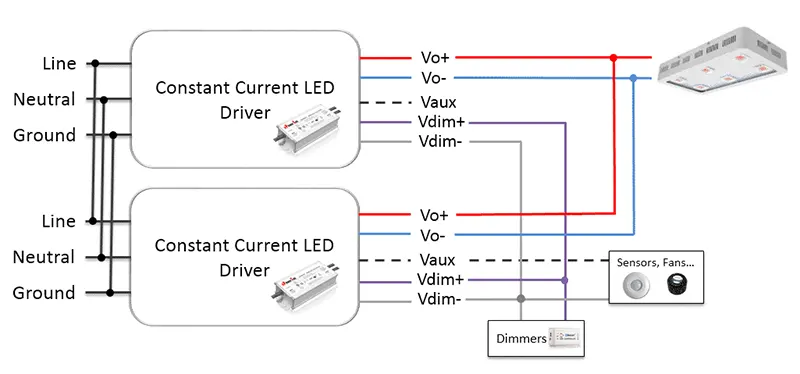
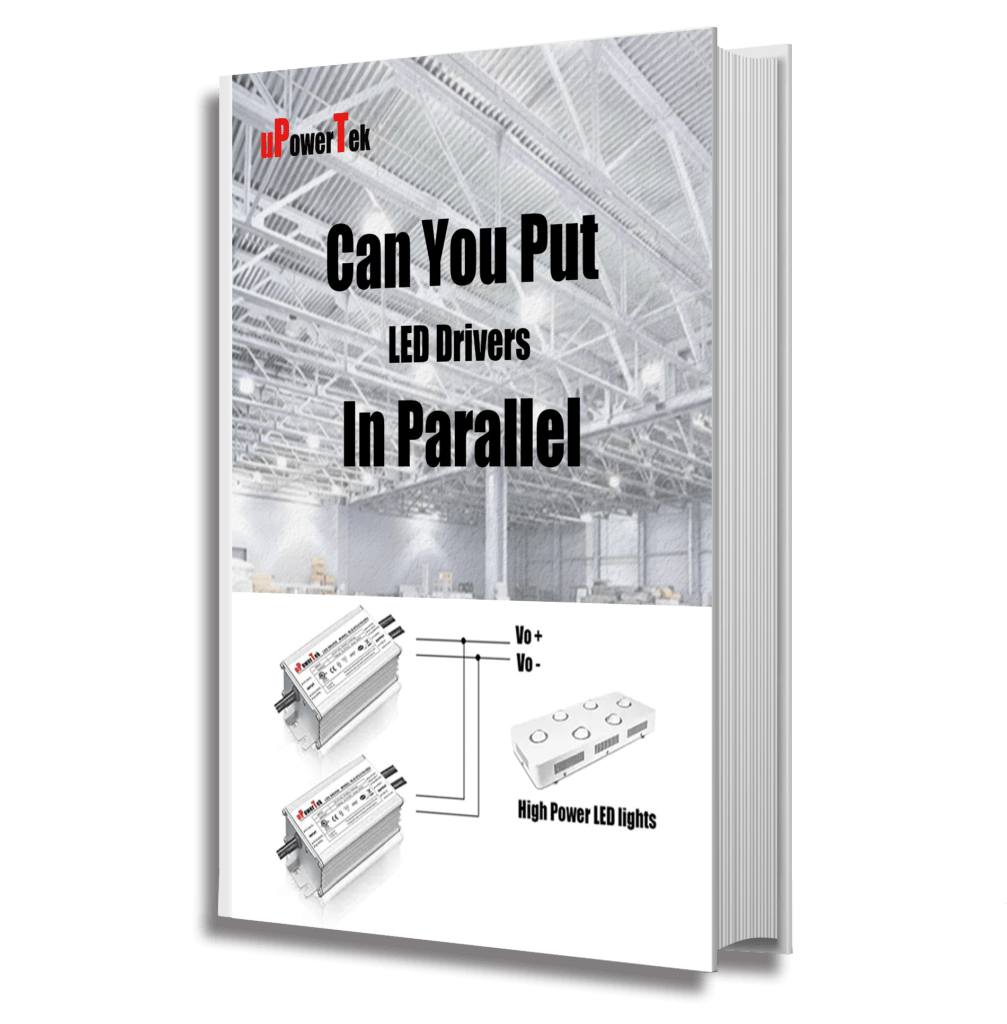
Download this page as a PDF
To save you time, we have also prepared a PDF version containing all the contents of this page, only leave your email and you will get the download link immediately.
Higher Power With Parallel LED Drivers
When you put LED drivers in parallel, it maintains a lower forward voltage. This is because, in parallel, the voltage does not stack up as in the case of a series connection.
LED in parallel connection draws more current from the mains. Even if you take out one of the LEDs, the other continues to work. This shows that each LED driver in parallel draws its own current. Provided the power supply is efficient, the LED drivers receive full voltage.
Let’s make this a bit practical.
LED application areas such as automotive, indoor plant facilities, etc., require higher wattage. This is achievable with higher-power LED drivers. For example, you may need an 800W LED driver, but you can parallel 500W and 300W to get the 800 wattages you desire.
So, connecting LED drivers in parallel enhances the power output of the LED drivers.
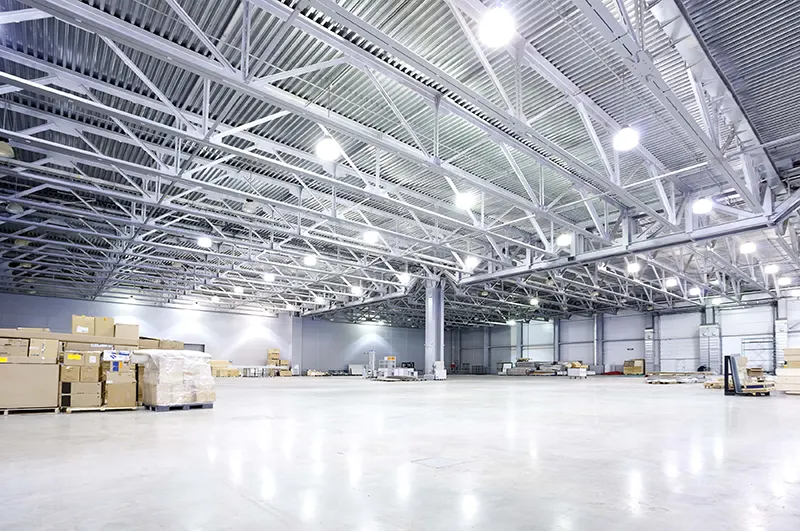
Benefits of Parallel Usage of LED Drivers
LED drivers in parallel hold immense benefits that many people don’t even know about. Although it is not a standard/constant practice in the industry, it supplies numerous benefits when put to use.
Let’s see some benefits.
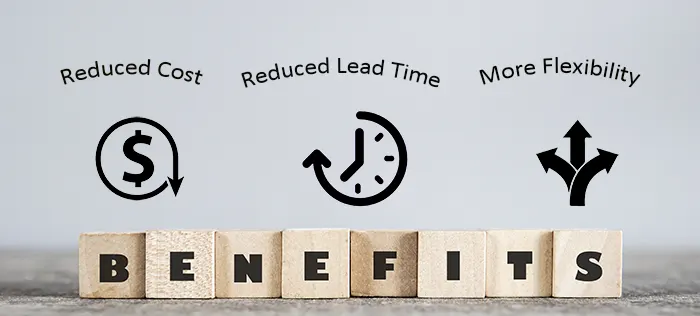
Reduced Cost
For example, you need a 400W driver; one can get two 200W drivers and parallel them to result in an output of 400W.
The cost of two 200W will be relatively lower than that of a 400W.
Reduced Lead Time
It takes a long time, and several complexities to produce large power LED drivers. As a result, their availability becomes a problem.
Why get stressed up and waste so much time when you can get hold of the lesser power LED drivers in stock and place them in parallel.
When you get the appropriate wattage and place it in parallel, their output will sum up to the large output you desire. Hence reducing lead time becomes possible.
More Flexibility
The less purchasing model number gives more flexibility in luminaire design. For example, we can use only single 200W driver model to achieve 200W, 400W,600W and 800W luminaire design rather than using a couple of models.
The Drawback of Paralleling LED Drivers
We have touched on the benefits of LED drivers in parallel. But there are some downsides to the concept of paralleling LED drivers.
You should note some of the key points when using parallel LED drivers.

- Higher Leakage Current
- Lower Efficiency Compared With Single LED Driver
- EMI Issues
- Stability
- Higher Dimming Interface Driving Capability Needed
- Only Suitable for Constant Current LED Drivers
Higher Leakage Current
The leakage current is the current that flows in an unwanted conductive part. Leakage current flows when the ideal current equals zero. It also occurs when the LED system is in an off state.
Parallel LED drivers prove to increase leakage current. This isn’t great news because it can cause the following;
- Leakage current triggers intermittent tripping of LED systems.
- It also triggers an increase in voltage on the conductive part that are accessible
- Excessive waste of energy
Lower Efficiency Compared With Single LED Driver
Parallel LED drivers have lower efficiency compared to the traditional single LED driver connection. The parallel LED driver falls short of efficiency due to a much lesser resultant voltage than a single LED driver.
EMI Issues
Electromagnetic interference is one problem with LED lighting that’s worth consideration. LED lighting systems emit electromagnetic properties that cause damage to radio signals in the environment.
The LED drivers play a vital role in this mix. The set up of parallel LED drivers boosts the electromagnetic activities of the system. The LED system tends to emit noise(EMI) with the DC switching system and pulse width modulation.
Stability
The stability of the LED driver is primary. The primary aim of the LED driver is to power the LED fixture by sending the appropriate input current. However, we can question the stability of the LED driver when the LED fixture displays current fluctuation.
LED drivers in parallel tend to give less in terms of stability. Although there is a higher power, the current inflow tends to be unstable. Hence an unstable output by the LED fixtures.
And the most important thing is to confirm with the manufacturer if their constant current LED drivers support parallel usage. You can only do the parallel after getting approval from your supplier. There is still risk that it gets unstable after parallel.
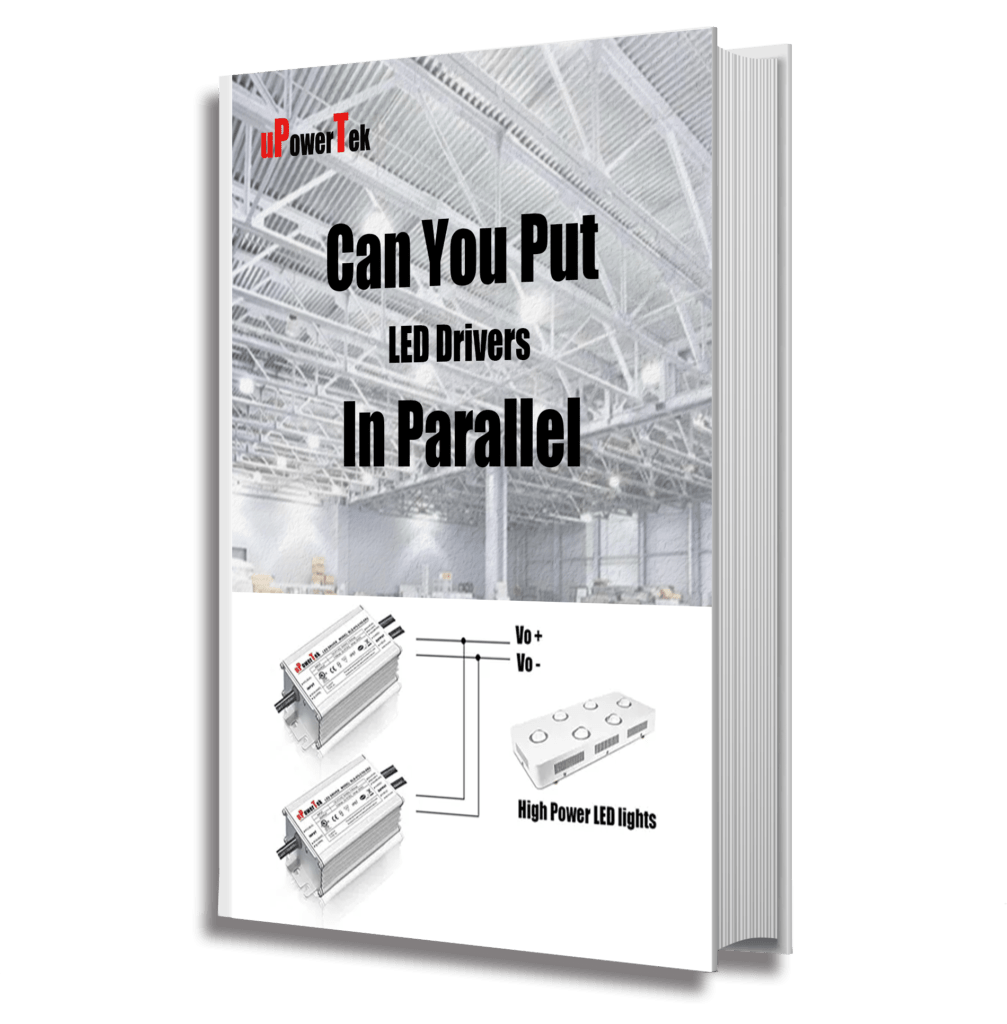
Want to read it later?
To save you time, we have also prepared a PDF version containing all the contents of this page, only leave your email and you will get the download link immediately.
Higher Dimming Interface Driving Capability Needed
The dimming feature is one selling point of the LED lighting fixture. There are two dimming methods: analog dimming and pulse width modulation (PWM). But the issue is that the analog dimming method provides less accuracy.
Dimming interface steps in to solve the problem as it converts analog dimming signal into the more accurate pulse width modulation signal.
Using parallel LED drivers means that there are multiple LED drivers in the connection. Hence will need a dimming interface with a higher driving ability for effective dimming.
Only Suitable for Constant Current LED Drivers
The Constant current LED drivers function on an assigned range of currents, maintaining the same current throughout the circuit.
Its build-up supports its connection with multiple LEDs in parallel. This streamlines your choice of LED drivers for higher power output.
Summary
One key thing to note in LED lighting design is that all actions depend on related factors. So whether or not you can put a LED driver in parallel is dependent on some factors. Fixture designers should understand and consider the necessary factors before taking action.

